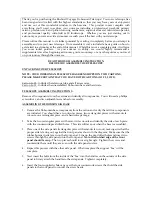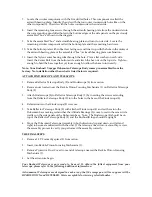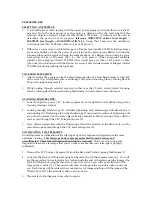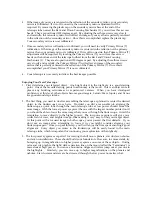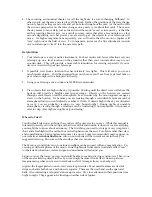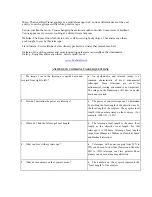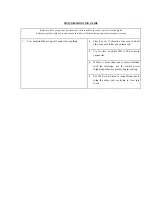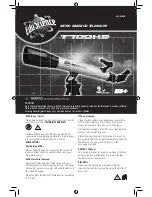
Mars--The Great Red Planet appears as a reddish-orange disk. Look at different times of the year
and try to catch a glimpse of the white polar ice caps.
Venus--just like the moon, Venus changed phases from month to month. Some views of brilliant
Venus appear as if you were looking at a distant crescent moon.
Nebulae--The Great Orion Nebula is a very well known night sky object. This and many others
are brought to you by this telescope.
Star Clusters--View millions of stars densely packed in a cluster that resembles a ball.
Galaxies--One of the greatest and most interesting galaxies is our neighbor the Andromeda
Galaxy. Enjoy this and many others. Much, much, more!
www.bushnell.com
ANSWERS TO COMMONLY ASKED QUESTIONS
1.
The image I see in the telescope is upside down and
reversed from right to left ?
•
An upside-down and reversed image is a
common characteristic of most astronomical
telescopes. Since telescopes are used for
astronomical viewing orientation is not important.
The image in the finderscope will also be upside
down and reversed.
2.
How do I determine the power my telescope ?
•
The power of your telescope can be determine
by dividing the focal length of the objective lens by
the focal length of the eyepiece. The eyepiece focal
length is the number printed on the eyepiece. (For
example: 1200
÷
25 = 48X)
3.
Where do I find the Telescope Focal Length
•
The telescope focal length is the same focal
length as the objective focal length. For this
telescope it is 1200mm. Telescope focal lengths
range from 600mm to 1200mm on Bausch & Lomb
and Bushnell telescopes.
4.
What can I see with my telescope ?
•
Telescopes with power ranging from 25X to
50X can be used to view Star Clusters and Nebulae.
90X to 120X telescope can view galaxies. Most
planets can be seen at any magnification.
5.
What do the numbers on the eyepiece mean ?
•
The numbers on the eyepiece represents the
“focal Length” of the eyepiece.


